This time last year I took a little road trip to Suffolk to visit some heritage and get some material for the blog. It was a mixed bag, with an excavation, several churches and an open-air museum on the list of things to see. Never having been to Suffolk before, it was all very exciting!

The West Stow Anglo-Saxon village was my first port of call and it is something of a hybrid as it is both an archaeological site and a museum at the same time. The village is a partial re-creation of the original which was occupied from around 420 AD to 650 AD, and was excavated between 1965 and 1972. West Stow sits in the Lark Valley near Icklingham and is just one of at least 30 Anglo-Saxon settlement sites associated with the valley.
West Stow today is best-known for its Anglo-Saxon settlement, and it first came to the attention of antiquarians and archaeologists over 150 years ago when an Anglo-Saxon cemetery was accidentally discovered, but since then research has shown that this is a multiperiod site with material from the Mesolithic onwards having been recovered.
If you know your history, you'll notice that the settlement was established quite soon after the Romans had left Britain, and this region of Britain was one of the first to be settled by Saxons. There are of course many differences between Roman and Saxons, and one very obvious thing in this area is that they settled in different places. There are many Roman settlements tucked along the edge of the Fens, while these incoming Saxons preferred the river terraces. One reason for this might have been the change in river levels around this time. That said, West Stow is just 2.5 miles from Icklingham which was an extensive Romano-British settlement, even boasting a church and cemetery in the late 4th century. One sign of the uncertainty gripping Britain in the final decades of Roman rule was the burial of coins etc which we call hoards today, and two have been recovered from Icklingham. They were thought to have been buried some time after 395 AD based on the date of the coins.

There may have been a decade between the collapse of the Roman administration and the arrival of the Saxons, and the excavations which took place between 1965 and 1972, made West Stow one of the most extensively excavated early Anglo-Saxon settlements in the country. The excavations revolutionised our understanding of the design and construction of timber buildings of that time. Once the excavations had finished, the unique opportunity arose to put these new interpretations to the test. An exercise in experimental archaeology that began in 1973 still continues: to date ten Anglo-Saxon buildings have been reconstructed on the site which can be visited today. There is a good article on West Stow free to download here. There's also a museum where finds from the excavations and the area can be seen, and it's really worth having a good look around it!
In the images below are some of the details of the 8 houses which give us an idea how they were built and what Saxons used them for. You can see how the roofing material is tied together and the exquisite locking mechanism for the door. The rooms shown here include a loom for weaving, including weights, a bed, cooking pot and heating arrangements - all the sort of thing we love to know! There's also detail from the outside of a wall, and this would have been made of wattle & daub, with the daub made from a range of materials including mud, animal hair and dung.
About half a mile from West Stow I visited an excavation being undertaken by a team from the Pathways of Ancient Britain project. Their excavation was at Beeches Pit, West Stow which was once a clay pit, in use during the late 19th and early 20th century when local people used the clay for brick-making. It's importance wasn't recognized by archaeologists until the 1970s the remains of snails (shells) were studied and then in the 1990s excavations began. The story that began to emerge was of a complex geological sequence of glacial sediments, overlain by silts and clays from free-flowing water, volcanic deposits and sands. The volcanic deposits were of rock formed from between 25-75% ash, so clearly linked to volcanic activity. The sand deposits held evidence of snails and vertebrates. The snails discovered were very distinctive and included one called Lyrodiscus, whose ‘cousin’ is now restricted to the Canary Islands. The snail and other animal remains has helped researchers establish a strong relationship with other Palaeolithic sites in Britain and northern France. The site has been dated to being occupied around 400,000 years ago.

The site also contains material of what archaeologists call 'Acheulian' technology. It is thought technology began to emerge around 1.7 million years ago and is characterised by very distinctive hand-axes which are oval or pear-shaped. This type of tool making lasted until around 130,000 years ago. The site had also produced some of the earliest evidence for the controlled use of fire in Britain. The team were aiming to establish the full story of the archaeology in the lower, and therefore older, part of the sequence here and answer two important questions: first, at what point within the interglacial period did humans first occupy Beeches Pit and second, what was the character of the technology used by these first inhabitants, and does that technology change through time? In addition, the team were going to be sampling and sieving of all the excavated sediments as this was an opportunity to add to the important faunal records from the site.

There was an interesting side note which came out of the excavation. As I mentioned earlier, excavations at Beecher's Pit began in the 1990s and as is often the case, when an excavation finishes the site is often covered, both to protect the site and to act as a marker. An unintended consequence of those earlier excavations can be seen here in the image on the right. The blue plastic sheeting placed over the old excavations around 30 years ago is now beginning to be exposed as a result of erosion on the site. This has given the team the chance to observe the degradation of the plastic over time and report it's impact on local conditions.

Moving forward quite some distance in time but only half a mile down the road, my next stop was at All Saints church in nearby Wordwell. Like many churches this little treasure had been 'restored' by the Victorians, but thankfully there was still enough of its history to be seen and be listed as a Grade 1 building! Today it is redundant, no longer an active church, but it is nevertheless still important and in the care of the Churches Conservation Trust.

A fantastic feature of this little church is the original Norman south doorway and it's very nice tympanum above the door. Shown here on the right, it has a design of 2 dogs facing each other, with an intricately interlaced tree of life between them. On the other side of the church the tympanum over the blocked north doorway has the decoration facing inwards. It isn't as well executed and has 2 figures, one holding up a ring, and a grid-like implement between them. It has been interpreted as being St. Katherine with her wheel and St. Lawrence with a gridiron. Later, in the 14th & 15th centuries, new windows were added replacing the original one, and around 1500 and a porch was added around this time. By the mid-18th century the church was in a "run down" condition, but it had been "put into good order" by 1829 and more restoration work was carried out between 1857 and 1866. This included work on the west front, the bellcote, porch, priest's doorway, the roofs and the pulpit.
Thankfully the restoration zeal of the Victorians spared some of the more delicate features in the church, including the 15th century benches which have decorative carvings of animal heads and poppies.
After All Saints it was on to Icklingham, which has had a church since Roman times, although not one of the two it now boasts. The village sits on an important junction of the Roman road known as the Icknield Way. It may even have been a major routeway prior to the arrival of the Romans and it runs from Norfolk to Wiltshire running along the chalk escarpment taking in the Berkshire Downs and the Chilterns. So, even though it is a small village has two churches of note. The first one I visited was also called All Saints.

All Saints' was mostly built in the 14th century but has earlier, Norman origin. It has not been used as a church for over 100 years and so is for the most part unspoilt and features a thatched roof. Like it's namesake in Wordwell it is in the care of the Churches Conservation Trust. The church has a collection of furniture, fixtures and fittings which reflect the level of local craftsmanship in the past and make this a real gem to visit.

I was immediately struck by the open nature of the space inside. As you can see there are different types of pews. Some are little more than benches, others more traditional with a back and sides, and elsewhere there are also box pews. The pews range in date from the 15th-17th centuries. Beyond the pews in the image here is a bier - this is a carriage or frame used to transport the coffin to the graveside, and this one dates to the 19th century.
In the gallery here, is the bier in more detail, the community chest (yes there were such things), bench and box pews, a medieval stone coffin, part of the rood screen and medieval floor tiles. These cover the floor of the chancel and sanctuary, and are again 14th century. All different in shape, colour and design, they combine to form a brilliant mosaic.
The pews sit in the oldest part of the church, 11th or 12th century, while much of the rest of the church is 14th century. The tops of the north and south walls are carved cornices, and traces of paint here show that the stonework would originally have been richly decorated. Much of this was obliterated in churches during the Reformation.
Icklingham's second church is St James' and is a little younger than All Saints, dating to the 13-14th century. That both churches were built or heavily remodelled at this time attests to the wealth and fortitude of the population. By the end of the eleventh century Suffolk was wealthy, densely populated, highly commercialised and urbanised; in the fourteenth century its people faced three tumultuous events - the Great Famine (1315-22), the Black Death (1349) and the Peasants' Revolt (1381). Despite this, by 1500 Suffolk was one of the richest and most industrialised regions of England, with a strong economy based on cloth manufacture (wool), fishing, dairying and tanning.

St James is a Grade II* Church, medieval in origin and again restored by the Victorians in 1864. The tower was rebuilt after it collapsed in the early 19th century. The chancel is the oldest remaining part dating to about 1300 AD. It has with 2-light south windows, a restored priest's doorway and a 3- light west window. In the late 14th century a south doorway and later a north doorway were added and the original doors are still in use.
The churchyard is interesting, as almost every churchyard is, and has some nice chest tombs like this one below. If you'd like to see the 3D scan of this tomb follow this link.

All in all, not bad for a day trip?



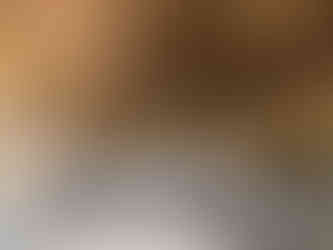






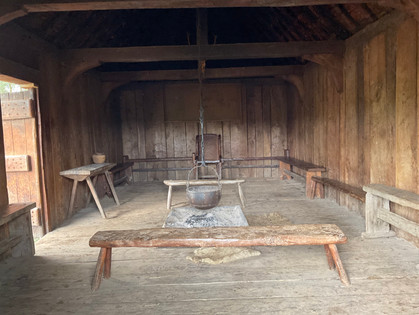

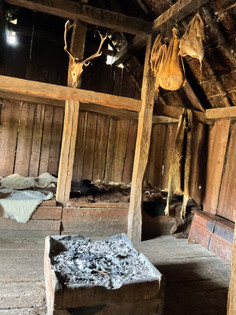


















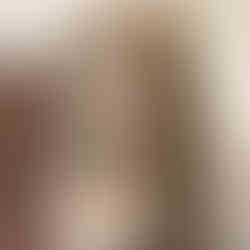




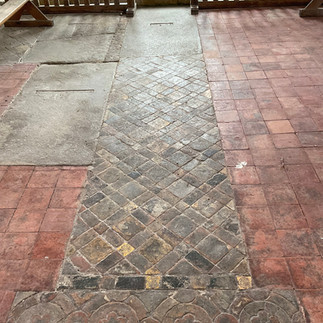
Comments